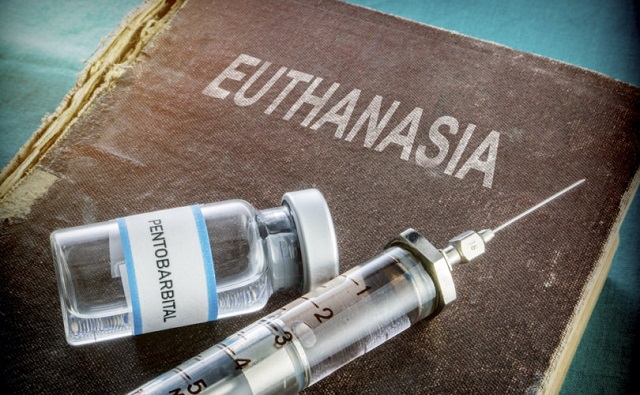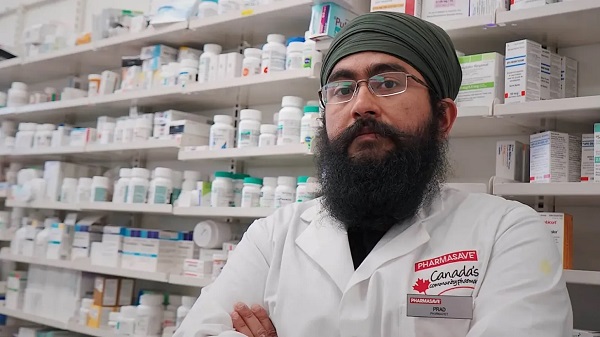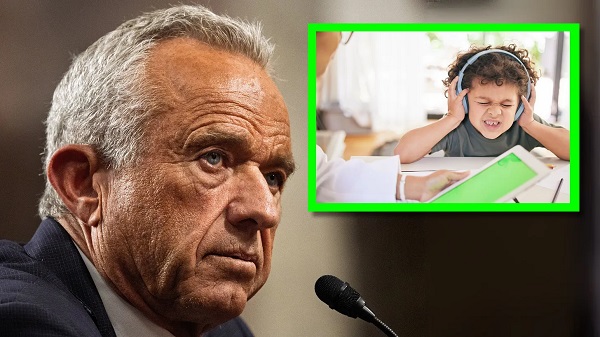Health
Statistics Canada admits to not identifying euthanasia as cause of death in official reports

From LifeSiteNews
Statistics Canada explained that if a Canadian struggling with cancer, for example, chooses to be euthanized, their death will be attributed to cancer in official reports, not euthanasia.
Statistics Canada has admitted to excluding euthanasia from deaths totals, despite being the sixth highest cause of mortality in the nation.
On November 28, Statistics Canada revealed that its euthanasia program MAiD (Medical Assistance in Dying), is not recorded as a cause of death in official reports. Instead, the government records the illness with which the person was suffering from that led them to chose to end their life as the cause of death.
“In the database, the underlying cause of death is defined as the disease or injury that initiated the train of morbid events leading directly to death,” StatsCan posted on X, formerly known as Twitter. “As such, MAID deaths are coded to the underlying condition for which MAID was requested.”
In the database, the underlying cause of death is defined as the disease or injury that initiated the train of morbid events leading directly to death. As such, MAID deaths are coded to the underlying condition for which MAID was requested.
For more info: https://t.co/aVXznOKq9S— Statistics Canada (@StatCan_eng) November 28, 2023
In other words, if a Canadian struggling with cancer chooses to be euthanized, their death will be attributed to cancer, not MAiD, in StatsCan’s databank.
The decision comes as deaths by MAiD are rapidly increasing in Canada. According to Health Canada, in 2022, 13,241 Canadians died by MAiD lethal injection, which is 4.1 percent of all deaths in the country for that year, and a 31.2 percent increase from 2021.
According to this method of recording, despite being the sixth leading cause, MAiD was not listed as a cause of death in a November report of the top 10 leading causes of death from 2019 to 2022.
If MAiD had been listed as a cause of death, it would have been placed just under cerebrovascular diseases and just above chronic lower respiratory diseases.
MAiD has rampantly increased in Canada, with many Canadians feeling forced to end their lives through euthanasia as wait times for treatment skyrocket to record highs.
This is the case of 52-year-old Dan Quayle, a grandfather from British Columba. On November 24, he chose to be “medically” killed by a lethal injection after being unable to receive cancer treatment due to the increased wait times.
Throughout the agonizing wait, his family “prayed he would change his mind or get an 11th-hour call that chemo had been scheduled,” but were instead told consistently by the hospital that they were “backlogged.”
The family is speaking out now “following the stories of two Vancouver Island women who went public with their decisions to seek treatment in the U.S. to avoid delays in B.C.” – and Dan’s wife believes that she could still have her husband today if he’d gotten the treatment he needed. In fact, wait times for cancer patients who are literally dying while waiting for treatment keep getting worse.
Unfortunately, Quayle’s story is not unique, as many Canadians have reportedly chosen to end their lives with MAiD as they are unable to obtain necessary healthcare.
However, instead of supporting the healthcare system to prevent Canadians from taking their own lives, the Trudeau government is working to expand access to MAiD by loosening its requirements.
On March 9, 2024, MAiD is set to expand to include those suffering solely from mental illness. This is a result of the 2021 passage of Bill C-7, which also allowed the chronically ill – not just the terminally ill – to qualify for so-called doctor-assisted death.
The mental illness expansion was originally set to take effect in March of this year. However, after massive pushback from pro-life groups, conservative politicians and others, the Liberals under Trudeau delayed the introduction of the full effect of Bill C-7 until 2024 via Bill C-39.
The expansion comes despite warnings from top Canadian psychiatrists that the country is “not ready” for the coming expansion of euthanasia to those who are mentally ill, saying expanding the procedure is not something “society should be doing” as it could lead to deaths under a “false pretense.”
The number of Canadians killed by lethal injection since 2016 now stands at 44,958.
Addictions
Addiction experts demand witnessed dosing guidelines after pharmacy scam exposed

By Alexandra Keeler
The move follows explosive revelations that more than 60 B.C. pharmacies were allegedly participating in a scheme to overbill the government under its safer supply program. The scheme involved pharmacies incentivizing clients to fill prescriptions they did not require by offering them cash or rewards. Some of those clients then sold the drugs on the black market.
An addiction medicine advocacy group is urging B.C. to promptly issue new guidelines for witnessed dosing of drugs dispensed under the province’s controversial safer supply program.
In a March 24 letter to B.C.’s health minister, Addiction Medicine Canada criticized the BC Centre on Substance Use for dragging its feet on delivering the guidelines and downplaying the harms of prescription opioids.
The centre, a government-funded research hub, was tasked by the B.C. government with developing the guidelines after B.C. pledged in February to return to witnessed dosing. The government’s promise followed revelations that many B.C. pharmacies were exploiting rules permitting patients to take safer supply opioids home with them, leading to abuse of the program.
“I think this is just a delay,” said Dr. Jenny Melamed, a Surrey-based family physician and addiction specialist who signed the Addiction Medicine Canada letter. But she urged the centre to act promptly to release new guidelines.
“We’re doing harm and we cannot just leave people where they are.”
Addiction Medicine Canada’s letter also includes recommendations for moving clients off addictive opioids altogether.
“We should go back to evidence-based medicine, where we have medications that work for people in addiction,” said Melamed.
‘Best for patients’
On Feb. 19, the B.C. government said it would return to a witnessed dosing model. This model — which had been in place prior to the pandemic — will require safer supply participants to take prescribed opioids under the supervision of health-care professionals.
The move follows explosive revelations that more than 60 B.C. pharmacies were allegedly participating in a scheme to overbill the government under its safer supply program. The scheme involved pharmacies incentivizing clients to fill prescriptions they did not require by offering them cash or rewards. Some of those clients then sold the drugs on the black market.
In its Feb. 19 announcement, the province said new participants in the safer supply program would immediately be subject to the witnessed dosing requirement. For existing clients of the program, new guidelines would be forthcoming.
“The Ministry will work with the BC Centre on Substance Use to rapidly develop clinical guidelines to support prescribers that also takes into account what’s best for patients and their safety,” Kendra Wong, a spokesperson for B.C.’s health ministry, told Canadian Affairs in an emailed statement on Feb. 27.
More than a month later, addiction specialists are still waiting.
According to Addiction Medicine Canada’s letter, the BC Centre on Substance Use posed “fundamental questions” to the B.C. government, potentially causing the delay.
“We’re stuck in a place where the government publicly has said it’s told BCCSU to make guidance, and BCCSU has said it’s waiting for government to tell them what to do,” Melamed told Canadian Affairs.
This lag has frustrated addiction specialists, who argue the lack of clear guidance is impeding the transition to witnessed dosing and jeopardizing patient care. They warn that permitting take-home drugs leads to more diversion onto the streets, putting individuals at greater risk.
“Diversion of prescribed alternatives expands the number of people using opioids, and dying from hydromorphone and fentanyl use,” reads the letter, which was also co-signed by Dr. Robert Cooper and Dr. Michael Lester. The doctors are founding board members of Addiction Medicine Canada, a nonprofit that advises on addiction medicine and advocates for research-based treatment options.
“We have had people come in [to our clinic] and say they’ve accessed hydromorphone on the street and now they would like us to continue [prescribing] it,” Melamed told Canadian Affairs.
A spokesperson for the BC Centre on Substance Use declined to comment, referring Canadian Affairs to the Ministry of Health. The ministry was unable to provide comment by the publication deadline.
Big challenges
Under the witnessed dosing model, doctors, nurses and pharmacists will oversee consumption of opioids such as hydromorphone, methadone and morphine in clinics or pharmacies.
The shift back to witnessed dosing will place significant demands on pharmacists and patients. In April 2024, an estimated 4,400 people participated in B.C.’s safer supply program.
Chris Chiew, vice president of pharmacy and health-care innovation at the pharmacy chain London Drugs, told Canadian Affairs that the chain’s pharmacists will supervise consumption in semi-private booths.
Nathan Wong, a B.C.-based pharmacist who left the profession in 2024, fears witnessed dosing will overwhelm already overburdened pharmacists, creating new barriers to care.
“One of the biggest challenges of the retail pharmacy model is that there is a tension between making commercial profit, and being able to spend the necessary time with the patient to do a good and thorough job,” he said.
“Pharmacists often feel rushed to check prescriptions, and may not have the time to perform detailed patient counselling.”
Others say the return to witnessed dosing could create serious challenges for individuals who do not live close to health-care providers.
Shelley Singer, a resident of Cowichan Bay, B.C., on Vancouver Island, says it was difficult to make multiple, daily visits to a pharmacy each day when her daughter was placed on witnessed dosing years ago.
“It was ridiculous,” said Singer, whose local pharmacy is a 15-minute drive from her home. As a retiree, she was able to drive her daughter to the pharmacy twice a day for her doses. But she worries about patients who do not have that kind of support.
“I don’t believe witnessed supply is the way to go,” said Singer, who credits safer supply with saving her daughter’s life.
Melamed notes that not all safer supply medications require witnessed dosing.
“Methadone is under witness dosing because you start low and go slow, and then it’s based on a contingency management program,” she said. “When the urine shows evidence of no other drug, when the person is stable, [they can] take it at home.”
She also noted that Suboxone, a daily medication that prevents opioid highs, reduces cravings and alleviates withdrawal, does not require strict supervision.
Kendra Wong, of the B.C. health ministry, told Canadian Affairs that long-acting medications such as methadone and buprenorphine could be reintroduced to help reduce the strain on health-care professionals and patients.
“There are medications available through the [safer supply] program that have to be taken less often than others — some as far apart as every two to three days,” said Wong.
“Clinicians may choose to transition patients to those medications so that they have to come in less regularly.”
Such an approach would align with Addiction Medicine Canada’s recommendations to the ministry.
The group says it supports supervised dosing of hydromorphone as a short-term solution to prevent diversion. But Melamed said the long-term goal of any addiction treatment program should be to reduce users’ reliance on opioids.
The group recommends combining safer supply hydromorphone with opioid agonist therapies. These therapies use controlled medications to reduce withdrawal symptoms, cravings and some of the risks associated with addiction.
They also recommend limiting unsupervised hydromorphone to a maximum of five 8 mg tablets a day — down from the 30 tablets currently permitted with take-home supplies. And they recommend that doses be tapered over time.
“This protocol is being used with success by clinicians in B.C. and elsewhere,” the letter says.
“Please ensure that the administrative delay of the implementation of your new policy is not used to continue to harm the public.”
This article was produced through the Breaking Needles Fellowship Program, which provided a grant to Canadian Affairs, a digital media outlet, to fund journalism exploring addiction and crime in Canada. Articles produced through the Fellowship are co-published by Break The Needle and Canadian Affairs.
Subscribe to Break The Needle
Autism
RFK Jr. Completely Shatters the Media’s Favorite Lie About Autism

 The Vigilant Fox
The Vigilant Fox
They say autism is rising because of “better diagnosis”—but RFK Jr. just blew that narrative wide open. He brought the hard data and dropped one undeniable truth the denialists can’t explain.
HHS Secretary Robert Kennedy Jr. appeared on Hannity Thursday evening and unloaded on the predominant autism narrative. It started with a bombshell reveal from Kennedy’s own childhood.
Hannity asked: “What was the number when you were a kid—and what do you think is going on?”
Kennedy replied: “There’s really good data on that.”
He pointed to one of the largest studies ever conducted—900,000 children in Wisconsin, published in a top-tier medical journal.
“It looked at 900,000 kids. It was published in a high-gravitas journal, peer-reviewed study, and they found the rate to be 0.7 out of 10,000.”
That’s less than 1 in 10,000. Today? It’s around 1 in 31.
Let that sink in.
Join 110K+ Substack readers and 1.6 million 𝕏 users who follow the work of Vigilant Fox.
Subscribe for top-tier news aggregation and exclusive stories you won’t find anywhere else.
That’s when Kennedy sounded the alarm on what’s happening now—and why it’s so catastrophic. He said the rise isn’t just in frequency—it’s in severity.
“Two years ago, it was 1 in 36. The CDC data we released this week shows 1 in 31,” Kennedy said.
“The worst state is California,” Kennedy continued, “which actually has the best collection methodologies. So they actually, probably reflect what we’re seeing nationwide.”
“In California, it’s 1 in every 20 kids, and 1 in every 12.5 boys,” he explained.
Even worse, he said the numbers are likely underreported in minority communities. And for many kids, the symptoms are devastating:
“About 25% of the population of those kids with autism, about 25% of them are nonverbal, nontoilet trained,” Kennedy explained.
“They have all of these stereotypical behaviors, the head banging, biting, toe walking, stimming, and that population is growing higher and higher.”
“It’s becoming a larger percentage, so we’re seeing many more cases that are now linked to severe intellectual disability.”
He says it’s a glaring red warning sign—and it’s past time to start acting on it.
And this was the moment that Kennedy took a flamethrower to the media narrative about autism. He shattered the core excuse we’ve all been fed—that this epidemic isn’t real, that it’s just a change in how we count it.
He’s not buying it.
“The media has bought into this industry canard, this mythology, that we’re just seeing more autism because we’re noticing it more. We’re better at recognizing it or there’s been changing diagnostic criteria.”
But the scientific literature, Kennedy said, says otherwise.
“There is study after study in the scientific literature going back, and they decided that the literature going back says decades that says that’s not true.”
He then cited a major investigation by California’s own lawmakers.
“In fact, the California legislature… asked the Mind Institute at UC Davis to look exactly at that topic. They [asked], is it real or are we just noticing it more? The Mind Institute came back and said, ‘Absolutely this is a real epidemic. This is something we’ve never seen before.’”
And he made it painfully clear:
“Anybody with common sense, Sean, would notice that, because the autism—this epidemic is only happening in our children. It’s not happening in people who are our age. And if it was better recognition, you’d see it in 70-year-old men.”
But we don’t.
And after laying out the data, dismantling the media narrative, and exposing the severity of the crisis, Kennedy concluded with a clarion call to get to the bottom of this epidemic.
That’s why he says it’s time to dig deeper—leave no stone unturned, and we may have answers sooner than you think.
“President Trump asked me to find out what’s causing it,” he told Hannity.
“And I am approaching that agnostically. We are looking at everything, we are going to do, we’re going to be very transparent in how we design the studies.”
To get real answers, he’s farming the research out to top institutions across the country—with full transparency from day one.
“We’re going to farm the studies out to 15 premier research groups from all over the country. And we’re going to be transparent about our protocols, about the data sets, and then every study will have to be replicated.”
The list of possible factors is long—and nothing is being ruled out, Kennedy explained.
“We’re going to look at mold. We’re going to look at the age of parents. We’re going to look at food and food additives. We’re going to look at pesticides and toxic exposures. We’re going to look at medicines. We’re going to look at vaccines. We’re going to look at everything.”
When asked how long it would take, Kennedy didn’t miss a beat.
“I think we’ll have some preliminary answers in six months. It will take us probably a year from then before we can have definitive answers because a lot of the studies will not go out until the end of the summer.”
For the first time in decades, someone is asking the hard questions—and demanding real answers.
This time, nothing is off-limits.
Thanks for reading. If you value the work being published here, upgrading your subscription is the most powerful way to support it. The more this Substack earns, the more I can do to improve quality and create the best reader experience possible.
Thank you for your support.
-

 2025 Federal Election2 days ago
2025 Federal Election2 days agoOttawa Confirms China interfering with 2025 federal election: Beijing Seeks to Block Joe Tay’s Election
-

 COVID-192 days ago
COVID-192 days agoNearly Half of “COVID-19 Deaths” Were Not Due to COVID-19 – Scientific Reports Journal
-

 2025 Federal Election2 days ago
2025 Federal Election2 days agoHow Canada’s Mainstream Media Lost the Public Trust
-

 2025 Federal Election1 day ago
2025 Federal Election1 day agoBREAKING: THE FEDERAL BRIEF THAT SHOULD SINK CARNEY
-

 2025 Federal Election2 days ago
2025 Federal Election2 days agoReal Homes vs. Modular Shoeboxes: The Housing Battle Between Poilievre and Carney
-

 International23 hours ago
International23 hours agoNew York Times publishes chilling new justification for assisted suicide
-

 2025 Federal Election2 days ago
2025 Federal Election2 days agoPOLL: Canadians want spending cuts
-

 2025 Federal Election20 hours ago
2025 Federal Election20 hours agoMark Carney Wants You to Forget He Clearly Opposes the Development and Export of Canada’s Natural Resources












